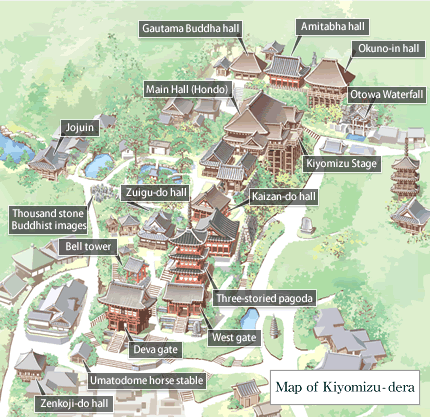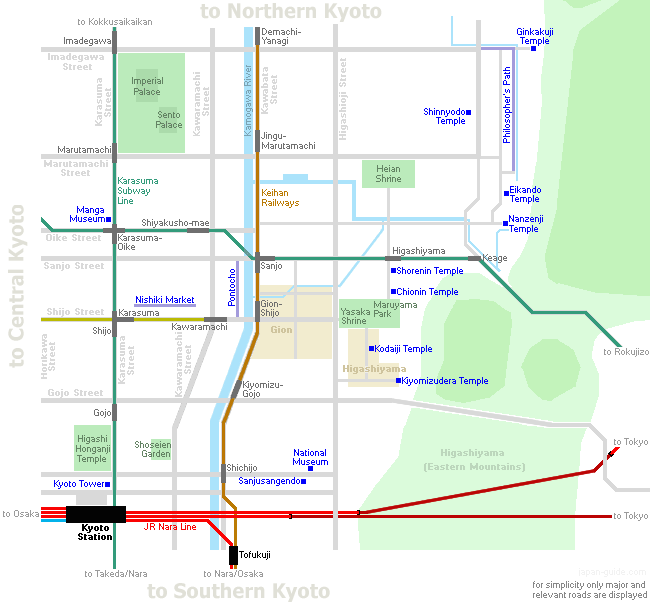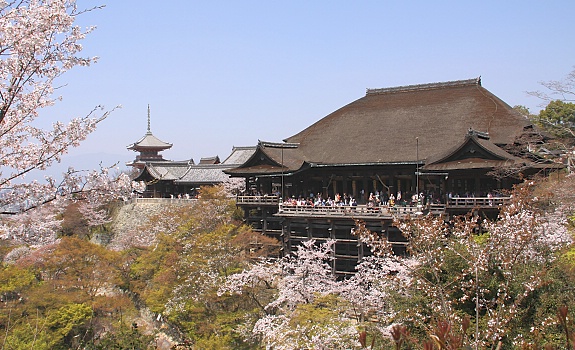
Kiyomizudera (清水寺, literally "Pure Water Temple") is one of the most celebrated temples of Japan. It was founded in 780 on the site of the Otowa Waterfall in the wooded hills east of Kyoto, and derives its name from the fall's pure waters. The temple was originally associated with the Hosso sect, one of the oldest schools within Japanese Buddhism, but formed its own Kita Hosso sect in 1965. In 1994, the temple was added to the list of UNESCO world heritage sites. Kiyomizudera is best known for its wooden stage that juts out from its main hall, 13 meters above the hillside below. The stage affords visitors a nice view of the numerous cherry and maple trees below that erupt in a sea of color in spring and fall, as well as of the city of Kyoto in the distance. The main hall, which together with the stage was built without the use of nails, houses the temple's primary object of worship, a small statue of the eleven faced, thousand armed Kannon.
Behind Kiyomizudera's main hall stands Jishu Shrine, a shrine dedicated to the deity of love and matchmaking. In front of the shrine are two stones, placed 18 meters apart. Successfully finding your way from one to the other with your eyes closed is said to bring luck in finding love. You can also have someone guide you from one stone to the other, but that is interpreted to mean that an intermediary will be needed in your love life as well. The Otowa Waterfall is located at the base of Kiyomizudera's main hall. Its waters are divided into three separate streams, and visitors use cups attached to long poles to drink from them. Each stream's water is said to have a different benefit, namely to cause longevity, success at school and a fortunate love life. However, drinking from all three streams is considered greedy. 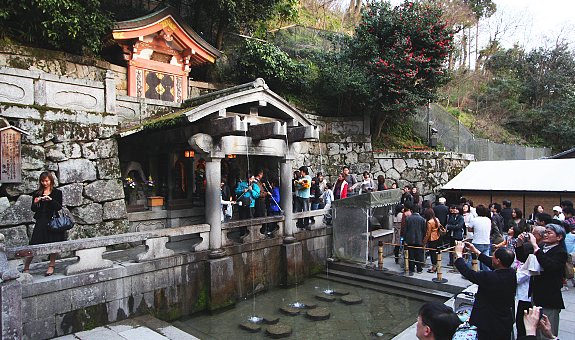
Other structures on the spacious temple grounds include the Okunoin Hall, which resembles the main hall on a smaller scale and has also a stage. Near the Okunoin are halls dedicated to Shaka Buddha (the historical Buddha) and Amida Buddha, as well as a small hall with nearly 200 stone statues of Jizo, the protector of children and travelers. The three-storied Koyasu Pagoda stands among the trees in the far southern end of the temple grounds, and a visit is said to bring about an easy and safe childbirth. Around the entrance of Kiyomizudera, outside the paid area, stand various other temple buildings, including a vermilion three storied pagoda, a repository for sutras, large entrance gates and the Zuigudo Hall which is dedicated toBuddha's mother and where against a small entrance fee you can wander the pitch black basement that symbolizes a mother's womb. 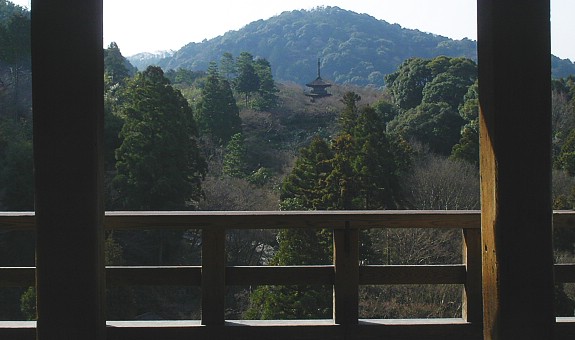
Part of the fun of visiting Kiyomizudera is the approach to the temple along the steep and busy lanes of the atmospheric Higashiyama District. The many shops and restaurants in the area have been catering to tourists and pilgrims for centuries, and products on sale range from local specialties such as Kiyomizu-yaki pottery, sweets and pickles to the standard set of souvenirs. The Higashiyama district together with Kiyomizudera, Yasaka Shrine and other temples in the area, have special evening illuminations during the annual Hanatoro event held in mid March. Kiyomizudera also has special illuminations during the autumn leaf season in the second half of November. 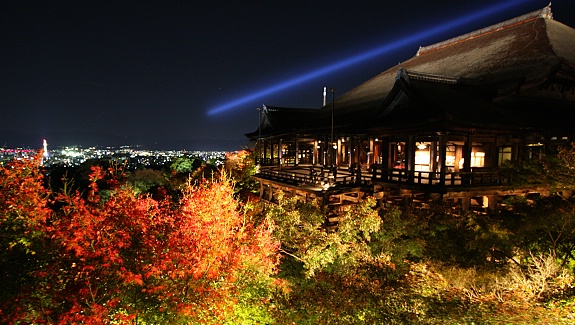
Any Questions? Ask them in our question forum. |

